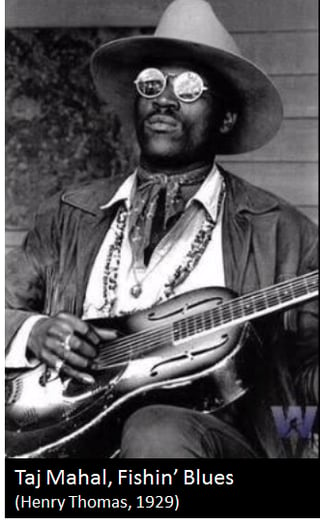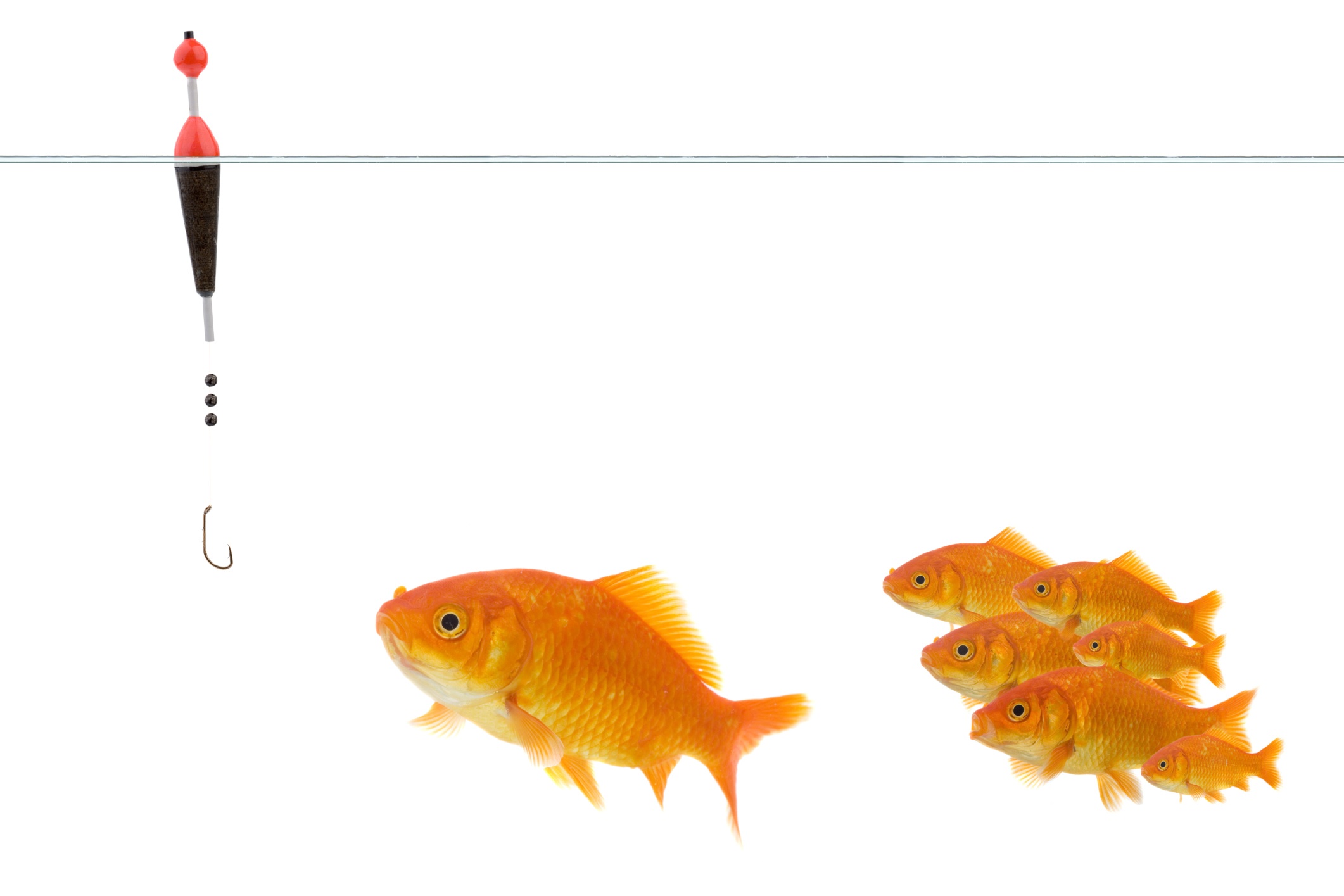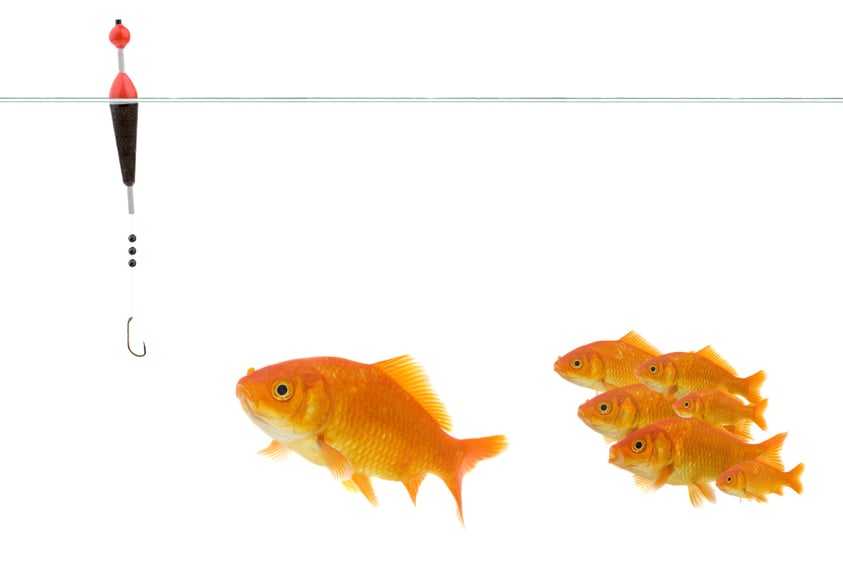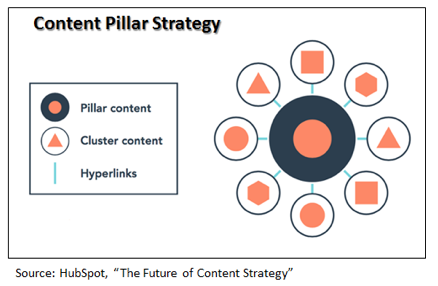It’s all about picking the right fishing hole and using the right bait
We were on Lake Ontario about 6 miles offshore, and I was mesmerized by our charter captain’s latest purchase: a very expensive commercial grade fish finder.
This phenomenal piece of technology not only colorfully displayed every rock and submerged object 200 feet below in stunning detail, it also pinpointed schools of bait fish that hovered above the lake trout that were the reason the four of us were playing hooky that day.
At that point, it was a matter of baiting the hooks, setting the lines at various depths, and trolling.
We caught over 150 lbs. of fish that day, and lest you think that I’m some kind of fishing wunderkind, that was the biggest catch of my life, and for that matter, all of our lives. By the end of the charter, my arms felt like I had bench pressed a Smart car 50 or 60 times over my head.
It sure makes it easier to catch fish if you have the right technology and know where the fish are.
Fish Where the Fish Are
The inspiration for this blog post came from an article by Gale Crosley that I found in the July 2016 digital issue of Accounting Today, titled, “Pathways to Growth: Choose Channels over Referrals.”
The gist of her piece is a simple message: If you want to find new clients, fish where the fish are.
She talks about distribution channels (“the way you find your buyers and they find you in large numbers”), and cites a few examples of clever ways to find and leverage a distribution channel. I thought the example of how one firm’s wealth advisors found new clients was phenomenal—identifying a micro-niche target market (wealthy widows) and then reaching out to them by partnering with churches to deliver financial literacy presentations at church-sponsored events.
Makes sense, right? This works on so many levels that it should serve as an inspiration to other firms.
Cast a Wider Net
Gale’s examples are brilliant takes on old fashioned outbound marketing, and serve as proof that with a modicum of creativity and effort, this approach can work to deliver top line results.
But today, given the changing demographics of buyers of accounting and other professional services, and the staggering digitally driven disruption of how, where, and when our prospects control the information they choose to get, outbound marketing and/or networking may not be enough.
In order to “get found,” firms need to weave inbound marketing into their mix of strategies and tactics.
At a very basic level, HubSpot tells us that “inbound marketing is about using marketing to bring potential customers to you, rather than having your marketing efforts fight for their attention.”
Unfamiliar with inbound marketing or want to catch up on the latest insights and guidance? Click here to get a complimentary copy of The Partner’s Guide to Inbound Marketing.
In a digital world, “getting found” is accomplished with strategies, tools and technologies like search engine optimization, social media marketing, and content marketing including blogging.
 If you think that the Internet and online search isn’t important to your firm or a niche practice, you might be surprised by findings from recent research, including Google’s “The Changing Face of B2B Marketing.” Consider these two findings, for example: (1) 89% of B2B researchers use the internet during the B2B research process, and (2) about 71% start on a generic query, so they're looking for a service or product first, not for you.
If you think that the Internet and online search isn’t important to your firm or a niche practice, you might be surprised by findings from recent research, including Google’s “The Changing Face of B2B Marketing.” Consider these two findings, for example: (1) 89% of B2B researchers use the internet during the B2B research process, and (2) about 71% start on a generic query, so they're looking for a service or product first, not for you.
It’s absolutely brilliant to target widows and widowers in your market needing financial literacy, and it’s really smart to partner with a church to do a persona appropriate financial literacy workshop. But while you’re putting a few dozen people into seats, there may be dozens or hundreds or even thousands of other widows and widowers in your market right now doing online searches to look for ways to bolster their financial literacy.
Doesn’t it make sense to use inbound marketing to bring them to you?
Got Good Bait?
It’s not enough just to fish where the fish are … you need to hook them too.

And like Taj Mahal tells us, “many a fish bites when you got good bait!”
Musical interlude. Click on the image.
In this case, the “bait” could be some type of offer built on valuable thought leadership requiring a completed form before redemption. Here’s how this part of the inbound marketing methodology works:
The prospect does a search online. You show up in a favorable position in search engine rankings because you did SEO the right way. They visit the relevant page on your website. They see an offer on that page. They are taken to a landing page with a form. They complete the form. They get the information. You get a lead.
That offer can be for a whitepaper, an eBook, a video series, a checklist … or even an invite for a seat at an upcoming financial literacy workshop for widows or widowers.
Catch More Fish with Multi-Dimensional Marketing
More than anything else, what I want you to take away from this blog post is that your firm’s search for new clients should not be one dimensional. It’s the combination of outbound and inbound marketing with 1:1 and 1:many marketing tactics that lands big (and small) fish.
It would be great to have a “prospect finder” to make finding and landing prospects easy but this technology does not exist. Your marketing team and partners will need to continually experiment, take risks, try new technologies, make investments, measure results, and make changes.
And, adding a very healthy measure of creativity and cleverness can only serve to make seeing results from your fishing expeditions faster and hopefully easier.
How you cook your fish (i.e. servicing and retaining clients) is well beyond the scope of this blog, and there certainly isn’t a lack of consultant chefs out there with cookbooks at the ready. But twenty recipes later, I’m still figuring out what to do with the last 10 lbs of lake trout in our freezer!
.png)









Leave a Comment